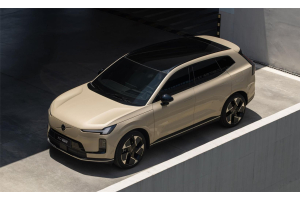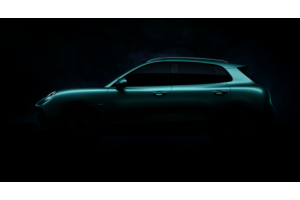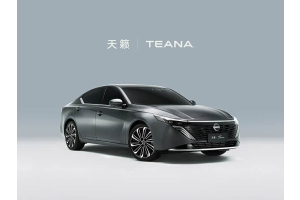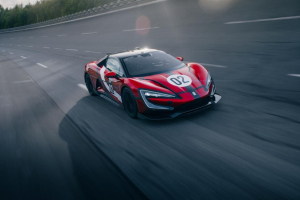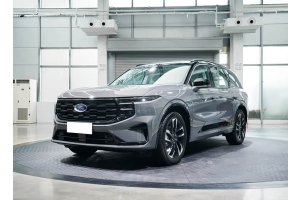Russian Auto Market: Global Brands Returning?

Russian Auto Market Dynamics: Reshaping Landscape as Global Brands Prepare to Return
Current Market Situation in Russia
Recent high-level interactions between the US and Russia, along with easing geopolitical tensions in the Ukraine conflict, have created conditions for multinational automakers to reconsider their Russian operations. Several major brands that previously exited due to investment risks are now actively planning their return strategies, potentially reshaping Russia's automotive landscape.
Countdown to Multinational Brands' Return
Key Developments:
- Hyundai: While selling its St. Petersburg plant to AGR Holdings, Hyundai retained a two-year buyback option and maintains active relationships with local dealers and staff.
- Japanese Automakers: Toyota and Mazda have suspended operations but preserved factory repurchase rights while continuing after-sales and parts supply.
- European Brands: Volkswagen recently launched the new Polo model, showing no intention of complete withdrawal. Renault maintains options to repurchase AvtoVAZ shares and continues utilizing its Kaluga plant.
- American Automakers: While no large-scale return is imminent, some may test the market with limited imports of premium models.
Important Policy Changes: The Russian government has implemented stricter import regulations including increased recycling fees and enhanced taxation on parallel imports and used vehicles to promote localization and domestic market protection.

Chinese Brands Dominate - Market Reshaping
Chinese automakers have capitalized on the vacuum left by departing global brands:
- Market Share Surge: Chinese brands now command 62.4% of Russia's passenger car market as of January 2025, up from just 19% in 2022.
- Record Sales: 2023 saw Chinese brands achieve record sales of 553,000 units in Russia, with total exports reaching 950,000 vehicles accounting for 42% of China's total auto export growth.
- Major Players: Geely, Haval, Chery, and Changan lead sales rankings while accelerating local assembly operations through CKD/SKD production.
- Brand Expansion: Over 30 Chinese brands now operate in Russia, dominating both traditional sales channels and parallel imports of premium models like Li Auto, Zeekr, and AITO.
Market Cooling and Emerging Challenges
Demand Slowdown: March 2025 saw new car sales plummet 45.5% year-over-year to 79,822 units, with Q1 cumulative sales down 25.3%. Notably, used car imports exceeded new car imports for the first time in March, signaling significant market restructuring.
Chinese Brands Face Headwinds: Some Chinese companies have withdrawn due to weakening demand and stricter Russian policies, while even leading brands like Changan and Geely show sales volatility.
Risks in the New Competitive Landscape
- Policy Barriers: Russia may impose re-entry conditions like joint venture requirements or technology transfers to benefit domestic industry.
- Distribution Network Realignment: Chinese brands now dominate dealer networks abandoned by global brands, creating potential conflicts if multinationals return.
- Brand Perception: While Chinese brands have gained market share, Japanese/Korean and European brands maintain stronger reputations for durability, cold-weather performance, and after-sales service.
Brand Performance Overview
| Brand | Q1 2025 Market Share | March 2025 Sales Trend | Key Advantages | Current Challenges |
|---|---|---|---|---|
| Lada | Market Leader | Granta, Vesta models leading | Local brand, government support | Competition from Chinese imports |
| Haval | High Position | Strong performance | Local production, SUV expertise | Slowing growth, import policy changes |
| Chery | High Position | Stable growth | Diverse assembly partnerships | Sales pressure |
| Geely | Declining | Significant March drop | Strong assembly capabilities | Market cooling |
| Changan | Declining | Significant March drop | NEV model lineup | Weak demand, localization difficulties |
| Japanese/Korean Brands | Low | Preparing return | Quality and after-sales reputation | Market share loss, re-entry barriers |
| European Brands | Low | Early recovery signs | Premium market reputation | Reduced share, policy obstacles |
Market Outlook
The Russian auto market stands at an inflection point with multiple variables in play. If political conditions continue stabilizing, intensified competition between returning global brands and established Chinese players will reshape the market. Success will depend on adapting to local conditions, building complete value chains, and navigating Russia's evolving policy environment.
With mainstream demand weakening and hybrid vehicles gaining popularity (hybrid market share is growing rapidly), the most adaptable manufacturers with comprehensive local strategies will likely dominate the next phase of Russia's automotive development.
In summary, 2025 promises fierce competition as returning global brands challenge Chinese automakers' hard-won dominance in this transforming market.




